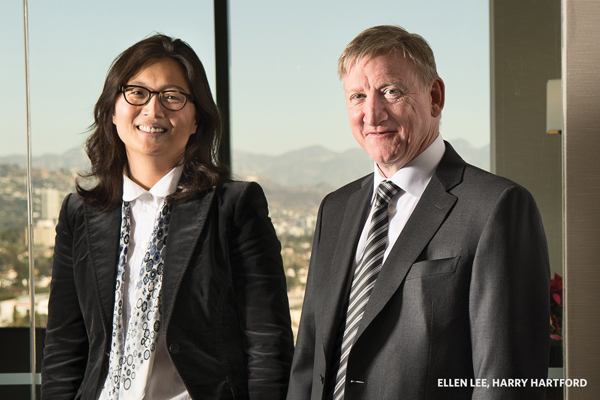When many equity markets around the world are at or near their all-time highs, hunting for value stocks is like shopping for bargains at Tiffany’s. “In this environment, stocks that exhibit value characteristics were left behind and missed the rising market tide for a variety of reasons,” observes Harry Hartford, co-manager of the $7.5 billion Causeway International Value Fund (his co-manager is Sarah Ketterer) and president of Los Angeles-based Causeway Capital. “So it’s inevitable,” he says, “that we will find a shrinking number of mispriced securities we feel comfortable owning.”
Still, as long as companies or countries run into problems and investors react by selling them in droves, Hartford and his team will find hidden gems in the stock market’s bargain rack. That happened in 2016 when the stocks of many U.K.-based companies took a tumble following the Brexit vote, a surprising development that raised concerns about the potentially negative impact that leaving the European Union would have on the country’s economy.
Hartford, 58, who has been in the investment management business for over 30 years—mining the international value space for most of that time—reasoned that because multinationals based in the U.K. earned most of their revenues overseas, any domestic economic fallout would have a minimal impact on their operations. As an added bonus, a pound weakened against the U.S. dollar and other currencies would provide a revenue tailwind for companies selling products or services outside the U.K. Instead of heading for the exit doors, the fund sold some holdings from EU countries, which had already seen decent upside, and put the money into more modestly valued U.K. stocks that had a strong shot at recovery.
One of Causeway’s top fund holdings is Volkswagen, which displays the managers’ tenacity when it comes to hanging on to their contrarian bets through thick and thin. They added the stock to the portfolio in late 2014, when an economic slowdown in China raised concerns about the company’s ability to capitalize on this important market. At the time, Hartford and his team believed new management and a strong stable of brands such as Porsche and Audi would help bring the stock back up.
Instead, the stock dived again in 2015 after a scandal erupted over the company’s supposed rigging of diesel emission tests. After assessing the company’s downside risk and costs to rectify the situation, the Causeway managers added to the Volkswagen position. Hartford believes that despite all the controversy, the market has overpenalized the automaker and he points to its strong cash position, global brands, and recent reorganization as evidence that the stock is worth hanging on to.
The key to Causeway’s strategy—buy them when they’re down—is finding stocks that will bounce back within two to three years rather than remain mired in uncertainty for much longer. Some hidden gems may simply be stuck in out-of-favor industries even though they have high rates of earnings growth and solid balance sheets. Other companies may be experiencing unique difficulties, such as a management change or acquisition, that scare off investors.
Regardless of the cause of the stock distress, the Causeway managers must see it as a temporary or fixable problem with a path toward recovery. A company’s history of paying dividends is preferable, but not required. Unlike many investment managers, Hartford is not a huge fan of stock buybacks as a measure of value. “In my experience,” he says, “a lot of companies engage in buybacks at the wrong time. They tend to be value destructive.”
To find the stocks they like with value chops, Hartford and his team first sift through a universe of about 1,500 international names, mainly from developed markets, with capitalizations of at least $1 billion. The stocks must be cheaper than others that trade in their countries, industries and sectors, when observed by metrics such as price-to-earnings ratios, price-to-book ratios, yields and overall financial strength. Stocks that pass those screens are more closely scrutinized during company visits and interviews with suppliers, customers, competitors and industry analysts.
The fund uses fundamental analysis, as well as a quantitative model that ranks each stock by risk-adjusted returns and calibrates how it will influence the overall volatility of the portfolio. “We’re looking to identify whether a company is cheap, and if it is, to determine to what degree the market has mispriced an investment opportunity,” says Hartford. “But we also need to understand whether our return expectations justify taking more or less risk.”
Searching For Value In A Pricey World
January 2, 2018
« Previous Article
| Next Article »
Login in order to post a comment








